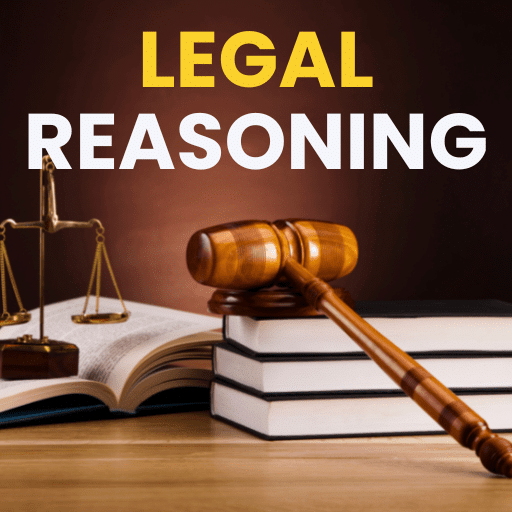Current Affairs: Passage of the Day - 19 October 2024 | Current Affairs: Daily, Weekly & Monthly - CLAT PDF Download
Directions: Read the passage carefully and answer the questions that follow.
The United States’ Federal Trade Commission (FTC) will soon implement a “click-to-cancel” rule, which will make it significantly easier for consumers to cancel their subscriptions and memberships, and make companies liable to face civil penalties for complicating the cancellation process.
“Too often, businesses make people jump through endless hoops just to cancel a subscription. The FTC’s rule will end these tricks and traps… Nobody should be stuck paying for a service they no longer want,” FTC Commission Chair Lina M Khan said. The FTC voted 3-2 to approve the new rule on Wednesday (October 16).
Here is all you need to know about the new rule, and if India too boasts a similar regulation.
What does the new rule say?
According to the FTC press release, sellers will be required to “make it as easy for consumers to cancel their enrollment as it was to sign up”. Notably, cancellations will have to be offered through the same medium (online, phone, etc.) people used to sign up, and it shouldn’t be overly burdensome.
Some crucial guidelines are as follows:
- Companies cannot require people to talk to a live or virtual representative to cancel if they did not have to do that to sign up;
- Companies cannot charge extra for phone cancellation, and must answer the phone or take a message during normal business hours. If they take a message, companies have to respond promptly;
- For memberships/subscriptions that were originally offered in person, companies cannot mandate an in-person subscription, and have to offer options for cancellation online or on the phone;
To whom will the rule be applicable to? How?
It will apply to “almost all negative option programs in any media” including “prenotification and continuity plans, automatic renewals, and free trial offers, whether the offer appears online, on the phone, or in person.”
The FTC defines “negative option” programmes as “companies assuming a customer accepted a service unless they specifically rejected it”. This would include something like a consumer agreeing to a one-week trial, and not cancelling it before being billed for regular membership.
The final rule will provide a legal framework preventing sellers from:
- Misrepresenting any material fact made while marketing goods or services with a negative option feature;
- Failing to clearly and conspicuously disclose material terms prior to obtaining a consumer’s billing information in connection with a negative option feature;
- Failing to obtain a consumer’s express informed consent to the negative option feature before charging the consumer; and
- Failing to provide a simple mechanism to cancel the negative option feature and immediately halt charges.
Why was this rule brought in?
The rule is part of the FTC’s ongoing review of its 1973 Negative Option Rule, which the agency is modernising to “to combat unfair or deceptive practices related to subscriptions, memberships, and other recurring-payment programs in an increasingly digital economy where it’s easier than ever for businesses to sign up consumers for their products and services”.
According to the Commission, while negative option marketing programmes are convenient for sellers, the FTC receives thousands of complaints about negative option and recurring subscription practices each year, with the number of complaints steadily rising over the past five years. In 2024, the number of daily complaints rose to nearly 70, up from 42 in 2021.
According to Forbes, the heightened concern around hard-to-cancel subscriptions and memberships has materialised alongside a growing subscription economy, and a spike in subscription prices.
A study conducted in 2022 by Michigan-based C R Research found that 42% of consumers had forgotten they were paying for services they did not use, and that customers generally underestimated the monthly cost of their subscriptions by an average of $133.
In the past, the FTC has gone after companies like Adobe, Amazon, Brigit, and Planet Fitness for allegedly making consumers’ subscriptions hard to cancel.
[Excerpt from Indian Express "FTC Implements Click-to-Cancel Rule for Subscriptions" Dated 19/10/24]
Q1: What is the main purpose of the FTC's new "click-to-cancel" rule?
(a) To increase subscription fees
(b) To make it easier to sign up for services
(c) To simplify the process of canceling subscriptions
(d) To limit the availability of online subscriptions
 View Answer
View AnswerAns: (c)
Sol: The "click-to-cancel" rule is designed to make it easier for people to cancel subscriptions and memberships.
Q2: When was the "click-to-cancel" rule approved?
(a) October 10, 2023
(b) October 16, 2024
(c) October 20, 2024
(d) October 30, 2024
 View Answer
View AnswerAns: (b)
Sol: The rule was approved on October 16, 2024, with a 3-2 vote.
Q3: According to the new rule, what is NOT required when canceling a subscription?
(a) Extra fees for phone cancellations
(b) Multiple cancellation options
(c) Speaking to a representative
(d) A written cancellation letter
 View Answer
View AnswerAns: (c)
Sol: The rule specifies that customers should not have to speak to a representative to cancel if they didn't need to speak to one to sign up.
Q4: What type of programs does the new rule target?
(a) One-time payment programs
(b) Negative option programs
(c) Limited-time offers
(d) Government services
 View Answer
View AnswerAns: (b)
Sol: The rule covers "negative option" programs where customers are automatically charged unless they cancel.
Q5: What is the average amount people underestimate how much they are paying for unused services?
(a) $50 per month
(b) $100 per month
(c) $133 per month
(d) $200 per month
 View Answer
View AnswerAns: (c)
Sol: People often underestimate costs by an average of $133 per month for services they aren’t using.
|
969 docs|678 tests
|
FAQs on Current Affairs: Passage of the Day - 19 October 2024 - Current Affairs: Daily, Weekly & Monthly - CLAT
| 1. What significant events occurred in current affairs on 19 October 2024? |  |
| 2. How do current affairs on 19 October 2024 impact global politics? |  |
| 3. What are the major themes in the current affairs reported on 19 October 2024? |  |
| 4. How can I stay updated on current affairs like those from 19 October 2024? |  |
| 5. What role do citizens play in responding to current affairs such as those from 19 October 2024? |  |



























